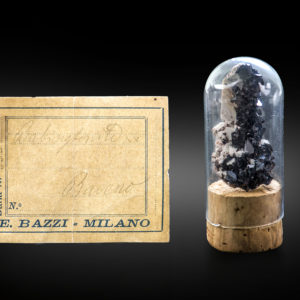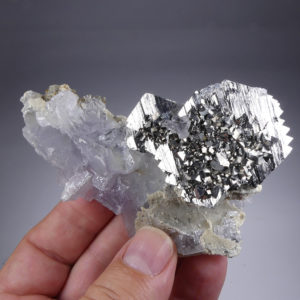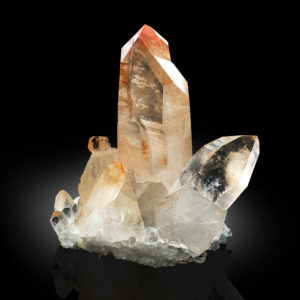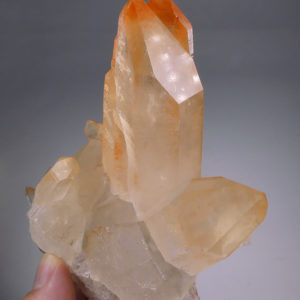MAGNETITE – Bolivia – GFS0426
In stock
€ 980,00 +TAX
Magnetite
Cerro Huañaquina, Yocalla Municipality, Tomás Frías Province, Potosí, Bolivia
12×7,5×3,5 cm. (main crystal about 2 cm. large)
Ex Currier collection #7043. This specimen hosts bright, well-defined octahedral crystals of high-quality Magnetite with the characteristic metallic gray-black coloration, in association with minor feldspar. The sizes range from small millimetric crystals to crystals reaching about 2 cm in diameter, which is not so common for the locality. Typically, specimens from Potosí show densely intergrown crystallization, but the key aesthetic element of this piece is the arrangement of the octahedra, which are essentially well separated from each other, highlighting their perfect individual geometric lines. No other localities are currently producing Magnetites of this quality, and only a few places in the world have ever yielded magnetite of this caliber.
Magnetite is an iron oxide mineral with the chemical formula Fe₃O₄. It forms through various geological processes, typically within igneous and metamorphic rocks. Below are some of the key processes involved in its formation:
Magmatic Origin: In igneous rocks, magnetite forms through the crystallization of molten magma. As magma cools, magnetite crystallizes from iron-rich liquids, often forming in association with other iron-bearing minerals like hematite.
Metamorphic Rocks: Magnetite can also form during metamorphism, particularly in high-temperature environments where iron-bearing minerals are subjected to heat and pressure. This process can lead to the recrystallization of pre-existing iron minerals into magnetite.
Hydrothermal Origin: Magnetite is also associated with hydrothermal processes. Hydrothermal fluids circulating through rocks can deposit magnetite, often in veins, as the iron in the fluids oxidizes.
Sedimentary Rocks: In some cases, magnetite can be found in sedimentary rocks, although this is less common. It can form through the chemical precipitation of iron from seawater or from sedimentary processes that concentrate magnetite grains in deposits known as “black sands.”
The Potosi district , located at central portion in the metallic mineralization belt of the eastern cordillera of bolivian Andes, is composed of the Ordovician, Silurian, Cretaceous and Tertiary systems with some igneous intrusions, such as granite and dacite etc. There are many polymetallic ore deposits of hydrothermal fissure filling type in the district. They occur in Ordovician slate, and Miocene dacitic pyroclastics such as tuff and tuff breccia, and dacite stock, and are composed of polymetallic ore minerals.
Magnetite is a naturally occurring iron oxide mineral, one of the most important iron ores, and was known and used by ancient civilizations. It has a black, metallic appearance and is one of the few minerals that is naturally magnetic, giving it its name. The term “magnetite” derives from the Greek word “magnēs lithos,” meaning “stone of Magnesia,” referring to the region of Magnesia in Thessaly, Greece, where deposits were first noted in antiquity. Its strong magnetic properties arise from its crystal structure, where the iron atoms have unpaired electrons, causing a net magnetic moment.
The ancient Greeks, as well as the Chinese, were aware of its ability to attract iron and of its use in the early development of compasses. Chinese records suggest that as early as 200 BCE, Magnetite was used to create a rudimentary compass, aiding navigation long before more modern tools became available.
Today, in the world of collecting, Magnetite is still a highly appreciated mineral due to its aesthetic characteristics.
In stock
Additional information
| Weight | 0.321 kg |
|---|---|
| Dimensions | 12 × 7.5 × 3.5 cm |
| Country | |
| Location | Cerro Huañaquina, Yocalla Municipality, Tomás Frías Province, Potosí |
| Species |
























